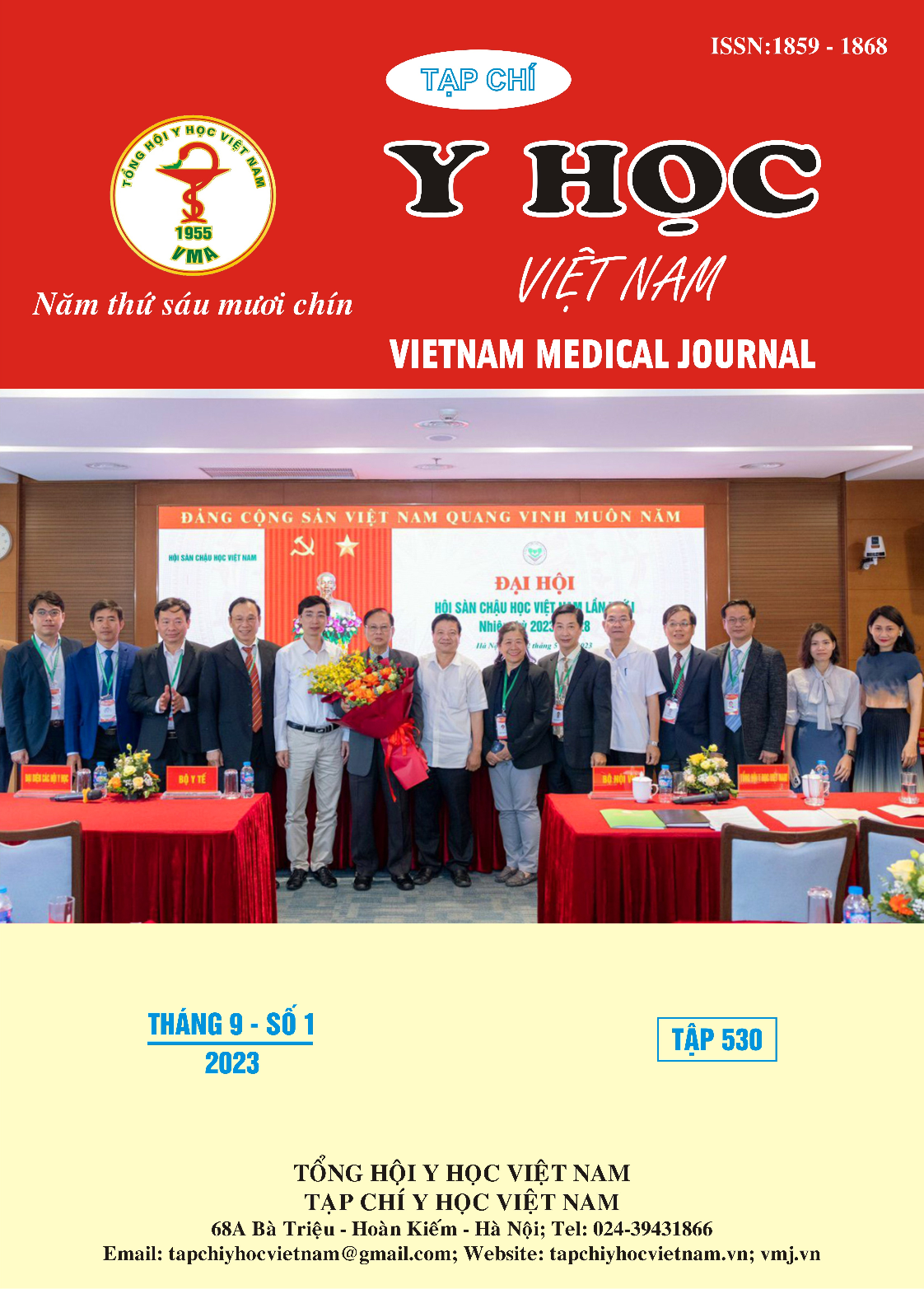ASSESSMENT OF THE EFFECTIVENESS OF NEUROLOGICAL RECOVERY IN PATIENTS AFTER CARDIOPULMONARY RESUSCITATION FOLLOWING CARDIAC ARREST USING THE CPC SCALE AT THE EMERGENCY DEPARTMENT OF NGHE AN GENERAL FRIENDSHIP HOSPITAL
Main Article Content
Abstract
Objective: To describe the effectiveness of neurological recovery in patients following cardiopulmonary resuscitation (CPR) using CPC scale (Cerebral Performance Category) at the Emergency Department of Nghệ An General Friendship Hospital. Study design: Descriptive cross-sectional analysis. Results: Among the 45 patients included in the study, the average age was (55,6 ± 21,1), with higher rate (77,8%) belongs to male. The average time from cardiac arrest to initiation of CPR was 16,2 ± 11,3 minutes, and the average duration of CPR at the Emergency Department was 23,5 ± 10 minutes. The percentage of patients with revascularization was 42,2%. The results of neurological outcome using CPC scale at hospital discharge showed 13,3% (6/45) of patients with good functional recovery (CPC 1-2 points). At 30 days post-discharge, 19 patients survived, with 36,8% (7/19) showing good neurological recovery. Conclusion: The outcome of succesful cardiac arrest at the Emergency Department was 42.2%, but only a very small proportion of patients had favorable neurological outcomes at the time of hospital discharge (13,3%).
Article Details
Keywords
Circulatory arrest, CPC score, Nghe An General Friendship Hospital.
References
2. Do SN, Luong CQ, Pham DT, et al. Survival after out-of-hospital cardiac arrest, Viet Nam: multicentre prospective cohort study. Bulletin of the World Health Organization. 2021;99(1):50.
3. Nguyễn Đức Phúc, Nguyễn Hữu Tân, Đánh giá tình trạng bệnh nhân ngừng tuần hoàn ngoại viện vào khoa cấp cứu - Bệnh viện Hữu nghị đa khoa Nghệ An. 2017.
4. Lee J, Yang W-C, Lee E-P, et al. Clinical survey and predictors of outcomes of pediatric out-of-hospital cardiac arrest admitted to the emergency department. Scientific Reports. 2019;9(1):1-9.
5. Hoang Bui Hai, Do NS, Vu DH, et al. Outcomes for out-of-hospital cardiac arrest transported to emergency departments in Hanoi, Vietnam: A multi-centre observational study. Emergency Medicine Australasia. 2021;33(3):541-546. doi:https://doi.org/10.1111/1742-6723.13750
6. Vattanavanit V, Bhurayanontachai R. Clinical outcomes of 3-year experience of targeted temperature management in patients with out-of-hospital cardiac arrest at Songklanagarind Hospital in Southern Thailand: an analysis of the MICU-TTM registry. Open access emergency medicine: OAEM. 2016;8:67.
7. Bùi Mạnh Cường. Nhận xét kết quả của liệu pháp hạ thân nhiệt ở bệnh nhân ngừng tuần hoàn do căn nguyên tim mạch. 2022.
8. Nguyễn Tuấn Đạt. Đánh giá hiệu quả bảo vệ não ở bệnh nhân hôn mê sau ngừng tuần hoàn bằng phương pháp hạ thân nhiệt chỉ huy. Trường đại học Y Hà Nội; 2022.


